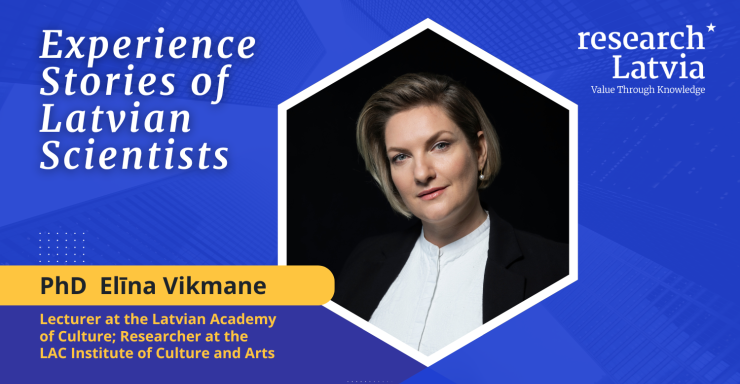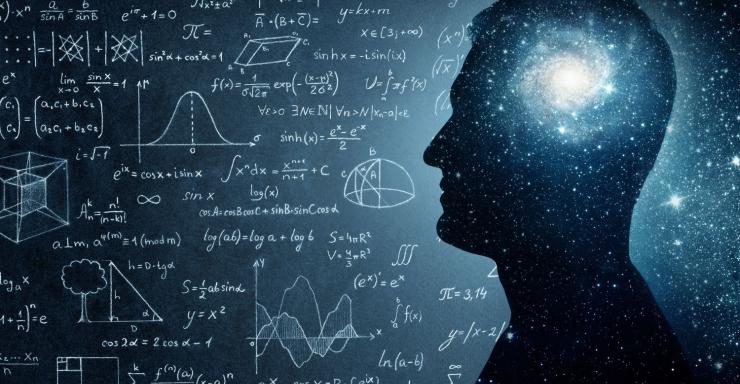In an interview, humanities researcher, University of Latvia (UL) associate tenured professor and children's literature author Sanita Reinsone was called a story hunter. Her professional life is closely connected with people's memoirs, diaries, and research into life writing traditions. The children's book "Friends and Neighbours" ("Draugi un kaimiņi" ,"Jāņa Rozes apgāds", 2024), which this year received both the recognition of the experts of the Latvian Literature Annual Prize and the Readers' Choice Award of the LSM portal in the recently held Jāņa Baltvilks Prize, is also a kind of memory capturing, and it ingeniously and wittily tells about growing up and friendship in the nineties Latvia.
In an interview with the LSM.lv portal, she talks about creative writing, research, and the digital world, which already has the power to not only record these memories but also to create a diversely analysable repository of our individual and collective experiences.
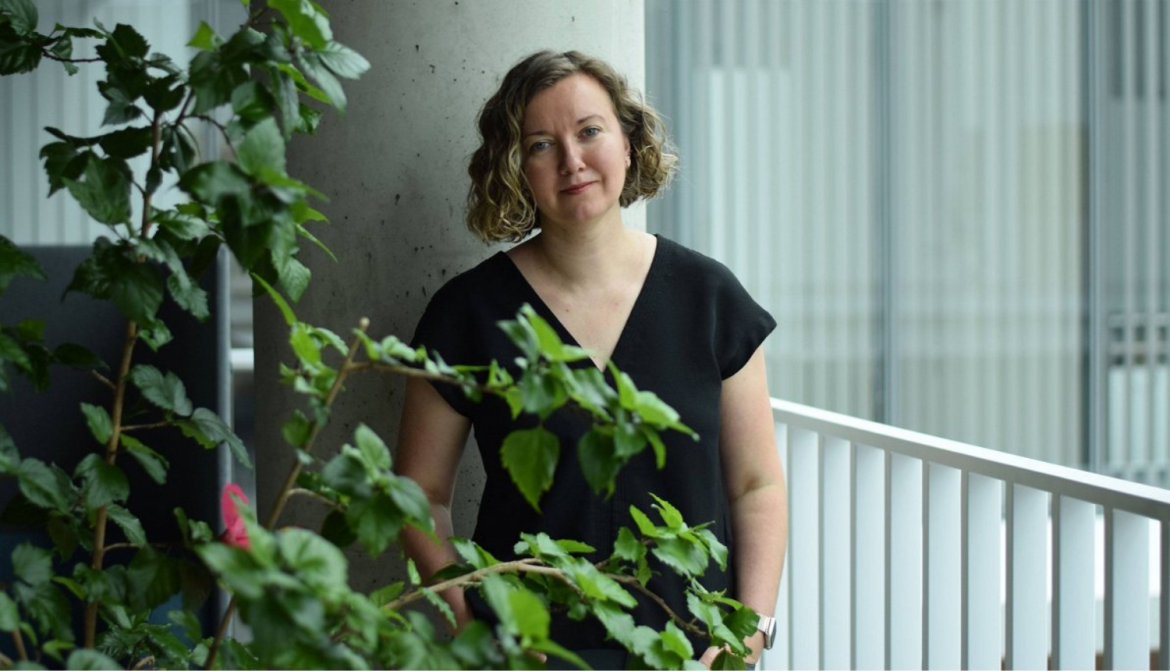
While searching for information about you and talking to people who know you well, I discovered so many interesting and surprising things. What I liked best was the phrase "story hunter" used in an interview to describe you. It sounds very romantic. But how much romance is there in research, and specifically in folklore research? And what can be fascinating about it for a modern person?
Folklore is very diverse. What school children or people who are not particularly interested in folklore know are folk songs or tales that we find in textbooks. But folklore has so many layers, so much interesting content, something that comes from our ancient, ancient roots, and it is content that does not repeat itself. Yes, there are variants and variations, but overall, folklore is very diverse in terms of content and form.
For the last twenty years, I have worked at the Archives of Latvian Folklore and led digitisation projects. As of this year, I am no longer there, but the projects continue. Digitising manuscripts, which are thousands and thousands of pages, revealed this wealth because we went through everything that people have said, told, and written down. These materials contain both folk knowledge, ideas, the art of expression, and also the entire history of collecting folklore – who wrote it all, why he wrote it all down, who he went to, and who told him something. There is a whole ecosystem underneath these large folklore collections, and the volume that has been collected in Latvia is imposing.
But, of course, another story is what appeals to and interests researchers. I am most interested in folk legends and various stories of different experiences, and most of all those that are associated with a certain place or ideas about it. It is usually interesting to explore the layers of awareness of a place, the information that people have once told about this place. One example is our country house, which is located in Bilska – between Smiltene and Valka. A wonderful place, an old house of my husband's ancestors, but at one point I realized that I do not know anything special about this place. I decided to take a look and see whether anything could be found in the folklore materials, and soon one legend after another started coming up – tens, even hundreds. It turns out that in the area around Smiltene an extraordinary number of folk demonological legends have been recorded. It is a very "dark" place. And right away the impression of the place, its meaning, changes – I began to see it with completely different eyes. When you bring all this information together and map it out, it creates almost another dimension – an invisible, and also unknown, or rather long-forgotten landscape. Folklore is not something marginal; it interests a great many people.
For more than ten years at the Archives of Latvian Folklore we organized manuscript transcription campaigns and witnessed how many people discovered their own points of interest in folklore this way – by transcribing, reading slowly, "traveling" through the manuscripts across their native places, searching for stories of their ancestors. There truly is much to discover in folklore.
It is like a parallel world, unfolding right next to us, yet one we are most often completely unaware of – the fact that about places, roads, mountains and hills, lindens and oaks, there exist so much information unknown to us.
Yes, that's true. Of course, not all places have been so fortunate, and this has largely depended on the local folklore collectors and their enthusiasm. But I think that there are still many discoveries ahead of us.
How did it happen that folklore fascinated you so much? How do you remember that moment, that feeling?
I don't think I really remember it. My idea when I went to study philology was – books. And I liked books, that was fine. But I probably didn't see myself as a researcher of texts. What was most exciting in folklore research was going to meet people, having those live conversations. As students, we went on many fieldworks, including individual ones. For example, I carried out a study on getting lost – on ideas and experiences of losing one’s way – and as part of that, I went to different parts of Latvia and interviewed people. That was exactly what drew me in so deeply – the live conversations, encounters with people and their life stories, their experiences, their ways of seeing the world.
Can we really say that every person could write a book about themselves?
No! (Laughs.)
Better not?
No, because we are talking about writing, and that is not so simple. In 2018, I initiated the creation of the Autobiographu Colletion at the Archives of Latvian Folklore, inviting people to submit or digitally deposit written life stories, memoirs, and diaries. It received a great response from the public. We have a very nice and active team, and we also do a lot to promote life writing. But yes, it is not an easy thing. We're better at speaking, but as soon as there is a page on the computer or in front of you on the desk, it is not at all so easy to write about your own life.
What is it that makes it difficult? The artistic side? Or maybe the fear of one's own thoughts?
Probably most of all it's that feeling – is my life really worth writing about? I always say that every life is worth writing about. One thing is that each of us is a personality, but we are also representatives of an era, and not a single detail that you write down in your life story is in vain. Let us look a hundred years ahead. Every recorded detail, everything is important – your views, emotions, fears. It all becomes ethnographic and important, and we see this in diaries written a hundred years ago or more. Everything seems so valuable there, even the simplest details.
In 2018, we started publishing the diary of Emīls Pudelis (1893–1969) on social media – every day, exactly what he had written one hundred years earlier. Emīls Pudelis was a farmer in the Mazsalaca area, where I come from, and his diary is like "Twitter" posts – very short. For us it was a very convenient format, and in 2018 we started publishing it on "Facebook" and "Twitter". We still continue it, and he – the diarist from a century ago – now has many followers. Emīls Pudelis does farm work, sometimes has fun, and over the years we follow his life – then he finds a girlfriend, then he gets married, now – a hundred years ago – a son is born, but all the while there is this farm work, the rhythm of rural life, and it seems fascinating.
What are the oldest and the most recent of such memories that have reached you?
At present this is a collective undertaking, preserved at the Archives of Latvian Folklore of the Institute of Literature, Folklore and Art of the University of Latvia, but I also continue to be involved from the Faculty of Humanities. If I'm not mistaken, one of the oldest collections is the diary of a Baltic German girl, written around 1826. But in fact, this collection began with very unique material, which I also published in a book called "Adam's Story" (Ādama stāsts). That was the first impulse, but after the publication of "Adam's Story", people started bringing me other materials as well. As a private person, I couldn't keep them, so we created a collection. The author of the autobiography, Ādams Purmalis (1847 – 1917), was born in the mid-19th century and wrote around the turn of the century. Essentially, this is a fascinating life story of a man living in the 19th century, rich in ethnographic and everyday details.
The most recent are the Pandemic Diaries. We had a project on pandemic diaries, in which more than 230 authors took part. It is a unique collection, remarkable both in its richness on an international scale and in how actively it is being used in research.
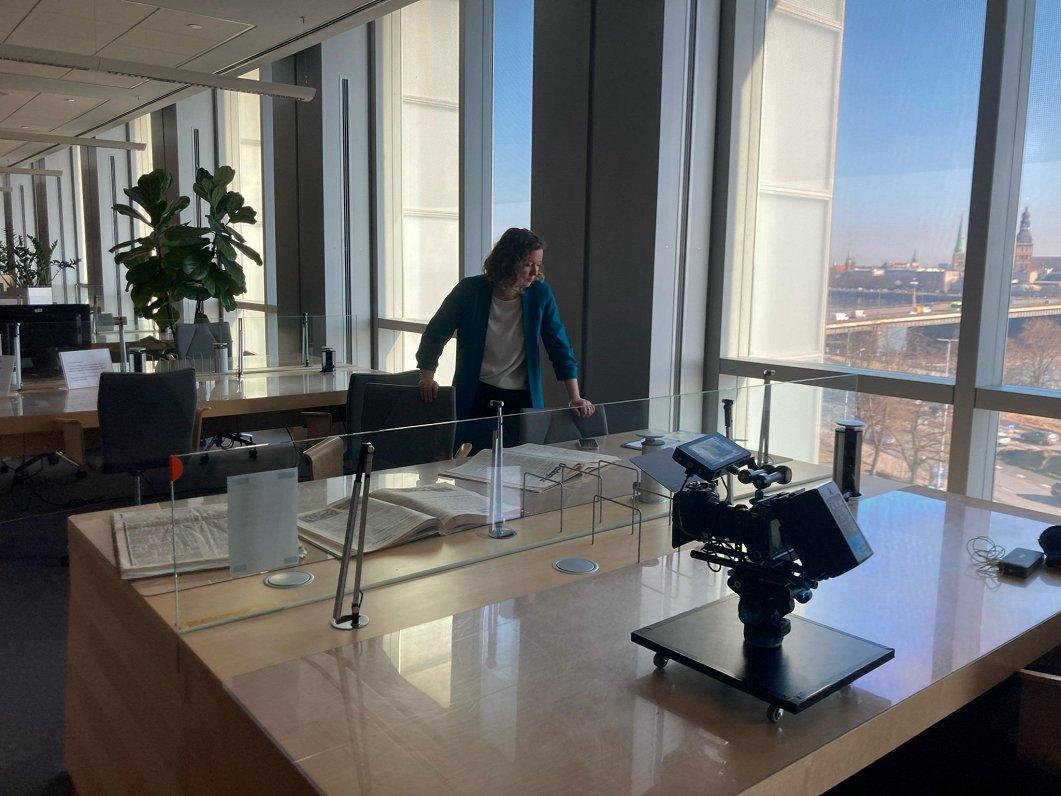
How much do we differ as people? The differences are certainly in everyday life, but in the way we think and feel –how much does that really differ?
That's a slightly provocative question. (Laughs.) But overall, judging by what is written in diaries, I would say that we are not very different – the worries, concerns, and what we entrust to diaries, it's all quite similar. At the moment, we are carrying out a study on this. Collecting and preserving the life writing material is one thing, and then there is another thing that resonates with digital humanities. We are building text corpora out of the Autobiography Collection, where our team can, for example, select youth diaries across the centuries. And once this material is more complete, we will be able to draw conclusions based on research. But when reading, getting to know the material – yes, the language is different, the way of expression may differ, but overall no major changes have taken place over the course of a century.
It's interesting, also when thinking about the future. We are getting closer and closer to artificial intelligence. How involved are you in all this? I know that you once worked in the Artificial Intelligence Laboratory of the Institute of Mathematics and Computer Sciences of the University of Latvia. I read about it and wondered how it all goes together!
My technical, computer side is fairly strong, and that goes back to childhood – my father was a teacher of both physics and computer science, so the very first computers were part of our everyday life. I remember going with him to work and trying things out there. I think the real turning point – whether I would go toward the humanities or the sciences – came in secondary school. I entered a humanities track in Cēsis, at the Draudzīgā Aicinājuma Cēsis State Gymnasium, and from then on the direction became clear. I was also fortunate: in my first year of studies, students were invited to take part in digitizing Latvian literature at the Artificial Intelligence Laboratory, and I joined. I worked there for quite a while on technical and digital tasks, and later continued this work at the Institute of Literature, Folklore and Art, where I also led the Digital Humanities Group. Yes, I enjoy both sides, and I like how they come together and what can grow out of that. But I also feel perfectly at home simply here – on the creative, humanistic side.
I cannot distance myself from artificial intelligence. I follow what is happening with interest. I don’t feel panick. AI changes a great deal, but then again, so did the Internet in its time. There are moments when new technologies arrive and it feels as if everything is changing, as if we wonder how we will go on – will artificial intelligence even write books in our place? That is the initial effect: for some, euphoria; for others, completely opposite emotions. I think that over time we will learn to adapt, organise ourselves and use it meaningfully, to throw away the husk side that comes with it.
About digital humanities. What is currently happening in this field in Latvia? How developed and serious is it currently in Latvia?
This is a field that is developing very rapidly. In a week, the seventh Baltic Digital Humanities Summer School will begin, with many participants and even more applicants than we can accommodate. It is organized in cooperation between the University of Latvia, the Institute of Literature, Folklore and Art of the University of Latvia and the National Library of Latvia. It seems to me that there is a fairly active digital humanities community in Latvia. Of course, I must admit that we are tiny compared to, for example, Germany or Poland. However, we have a very active community, and we are well aware of each other's research and institutional activities, and we also do many things together. An open digital research infrastructure is also being formed – databases, corpora, which can be used not only by the creators, but by anyone who needs them.
What is encouraging is that digital humanities are also beginning to take root in study programs. Of course, not every humanities student needs to specialise in this direction, but it is important to be aware of the possibilities that digital methods offer and how they can be a valuable tool in research. They can help process information more quickly, create maps, build visualizations of collected materials, reveal things that might otherwise go unnoticed, and so on. Master's and PhD theses are being developed in this direction, and I think it is progressing well. At the same time, with the rapid development of technology and artificial intelligence, the landscape is becoming more diverse and dynamic, and new opportunities are emerging. For example, modules in language technology are now being offered in both computer science and humanities programs at the University of Latvia. Naturally, there are challenges, as in any field, but overall digital humanities are becoming increasingly visible, and we can see that young people are very interested in them.
The good news is that it can also be studied later. Most often, it is the master's level, when students have already gained more solid knowledge in one field or another and can then move further. Many cultural professionals also come to the summer school to study certain topics and methods there. This year, for example, our topic is digital methods in historical research, which means that everything that can be useful in working with historical materials will be here – and not only for researchers. For instance, in handwriting recognition using AI applications, there will be a special workshop on digital map making.
It sounds like these paths are endless and that we may not even realise where they can all lead. Moreover, this is what could attract young researchers.
Yes, exactly! And many work primarily with qualitative methods; they do not aim to be the top expert in digital humanities. Rather, what we try to do is create an environment where interdisciplinary teams can form, where an expert in computational methods collaborates with a humanities researcher. Interdisciplinary collaboration in digital humanities is essential.
Yes, and somewhere in between the work and research, the book "Friends and Neighbours" was also written – a book that offers today’s children experiences that they can no longer really have. We protect our children so closely now, never letting them out of our sight, and here is this wonderful book about children who go visiting strangers and discover their stories.
Yes, that really has changed– though perhaps not so much in small towns. I remember my childhood in Mazsalaca very well; we knew every neighbour there. But still – entering a stranger’s house, from a child's perspective, was an adventure, a whole world in itself.
How did this book come about? Is it a story of experience? Or maybe several small stories collected?
Very hard to say! I wrote the main part quite some time ago, and then I let it sit for a long while. This is not my work, this is my hobby, so I allow myself to be without deadlines. I think I began writing something right after my first book was published. From about 2017 to 2021 I worked on it slowly, polishing the characters.
I don’t need to invent anything – real life already provides excellent examples. I have no need to create the setting – it is simply taken from somewhere, combined, pieced together from what I have known and experienced.
It is the same with the characters – almost all of them have their prototypes. Not directly, not one-to-one: from one I might borrow the height, from another a gesture or a tone of voice, and together they take shape. I would not call it a truly autobiographical text. There are traces, of course, and my neighbors or friends might recognize something here and there. But at its core these are observations rooted in life – people I have met, stories I have heard, figures who left a strong impression. Even the parrot is real. (Laughs.) There really was one, living in Torņakalns.
Has anyone recognised themselves?
I have given it to read and told them about it. I have also given the book to Juse's prototype to read, simply to make sure that nothing appeared there that might feel uncomfortable, because various details of life that could be real. I have given the book to the prototypes to read and said – look, this come from you. But, of course, there is also a great deal of imagination, in the sense that everything is highly embellished and stylised, so that the characters and events form a coherent whole.
The most mysterious character in the book is an assistant professor. His prototype is Dag Trotzig (1914–1944). He came to Latvia from Sweden in 1938, still very young, and worked at the University of Latvia as a lecturer in ethnology. He is highly enigmatic figure, with ties to the Swedish intelligence service as well. Together with my Swedish colleague Fredrik Skott, we are still in the hunt in Swedish archives for materials he may have sent from Latvia. He experienced the 1940 occupation here and immediately left for Sweden. I have access to his diaries, letters and various accounts. He died very young, in 1944 at the age of 29. I felt the urge to bring him to life in the book and to spin a kind of conspiracy theory that he is still living somewhere, in a mysterious house in a Latvian small town. In "Friends and Neighbours" I play around katica (traditional Latvian fishing tool) – Dag Trotzig actually published a scholarly article on the katica in 1940, so , so I included in the story a few quotes and sentences from that academic work.
Recently, my daughter also experienced a real "Friends and Neighbours" - era summer event – a head injury, stitches…
Scraped knees, bumped heads in the summer – yes, that was probably some kind of schooling in life. Sometimes we look back and shake our heads, thinking of all the things we did in childhood that our parents never knew about.
The 1990s speak to me very strongly; that is the period I want to reflect on, and I have not yet finished with it. At the moment I'm writing a sequel to "Friends and Neighbours".
Both main characters of the story are growing up, new problems begin to appear, and now comes the first experience abroad. At school an exchange teacher arrives – from Norway – from a small town called Gol in the beautiful Hallingdal valley. So one or both of the characters will have the opportunity to travel to Norway, to step outside their familiar surroundings, to encounter another culture. The story will be about skiing, a bit about overcoming oneself and the first time abroad, which for many of us who grew up in the 90s was truly a life-transforming experience. And Gol – the mythical, story-wrapped Norwegian town.
So we have something to look forward to, but you said you didn't have a deadline, so it won't be that soon.
I don't have a deadline, but I do want to finish it because the next work is already in my mind. I can't write in parallel – because I have much writing to do, including research. It's always an attempt to find time for writing alongside the work responsibilities, since everything is intellectually intense. So I devoted this vacation to writing and studying the Norwegian children's skiing culture.
Yes, the wild nineties – that's my childhood too. But how much do today's children understand? What feedback have you heard about "Friends and Neighbors" from young readers?
My children are the ones I test the writing on. I read everything out loud, many times. Even now, as I was preparing for the Baltvilkas Prize readings, I read to my youngest son, who is already twelve – which seems quite a grown-up. But he still lets me read to him, and then I watch for the moments when he laughs, orwhen it starts to feel boring. Yes, at home we’ve had quite a few discussions about the 1990s and earlier times. What makes me smile are the children’s ideas, which sound something like – you didn’t have the internet? For them it all blends into one muddle, as if we lived in some ancient age when there was no internet, no mobile phone, not even electricity – and what did you even eat! (Laughs.) I think those background details from that time, which I have woven into the book, give parents a good thread to follow in telling their own stories and sharing their own experiences.
The book has also had outstanding success – it has received the Latvian Literature Award, and recently the LSM Readers' Choice Award at the Baltvilka Award. How much hope and expectations did you have of receiving such recognition?
In fact, it was a huge surprise for me. Usually, one works with the aim of achieving results and success, but this is my hobby, so both awards came as a great surprise. The LSM Readers’ Choice Award as well – both are very high recognition. It is a kind of immense, pure joy, because it was so unexpected!d!
For me, writing is an activity full of pure joy – there is nothing heavy or complicated about it. I also find working with artists and publishing houses pleasant and uplifting.
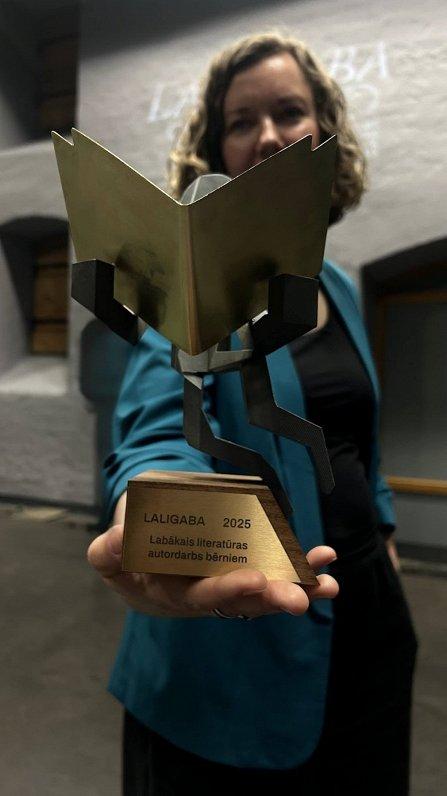
Tell me more about the tenured professorship. I understand that it is a big, serious achievement, because there are not many such professors in Latvia.
Yes, it is a new career model in Latvia with an international competition, and, of course, it is challenging. I have heard a tenured professorship called the zenith of an academic career. However, when I am asked to present myself in a professional setting outside the academic environment, I simply say "associate professor". It is more understandable that way. In essence, research in Latvia more or less runs on projects, which means that researchers’ salaries depend largely on success in project competitions. For university lecturers who work with students, the situation might be slightly different, but even there part of the income comes from attracting project funding. As a result, the work rhythm is rather unforgiving and unpredictable. The tenure professorship is an attempt to move closer to an internationally recognized academic career model and to provide greater stability. But above all, a tenure professor is an ambassador for their field of science – internationally visible, responsible for attracting projects and young researchers and PhD students, and for developing their discipline as a whole.
I am an associate tenured professor in digital humanities at the Faculty of Humanities of the University of Latvia. I have only been working here for a little over six months. In February, we established the Digital Humanities Centre, where we are actively working in this field, organising the aforementioned summer school, collaborating with other digital humanities centres abroad, and launching new research initiatives.
Do you ever doubt what you are doing and teaching? Do professors seriously suffer from the so-called imposter syndrome?
I think almost everyone, in one way or another, has moments of doubt. For me, ever since my doctoral studies, the feeling has been there – the older I become, the less I seem to know. And, of course, the volume and circulation of knowledge is becoming more and more intense. I also think about the moment when perhaps I will have to stop, because I will no longer be able to keep up, since everything develops so rapidly and the demands in science are also rising ever higher. At the moment I feel very good in my work and am doing quite successfully, but the short answer is – yes, of course this kind of unease exists, but it is probably part of the process and maybe part of life as well.
It is probably always worth keeping in mind that there is still a lot to learn and research.
Yes, of course, and in fact, being among talanted researchers and professors you can see – it is never the case that a person reaches some absolute ceiling. A title is not the ceiling! There are always possible turns and opportunities for growth, and knowledge never comes to an end.
Which is the path that you would still like to explore and learn?
Ah, there are so many paths and directions! Perhaps my particular situation is that I work in quite a number of areas, and in research it often happens that the direction which manages to attract funding is the one that develops, while the others lie dormant for a while. We shall see! But yes, the study of autobiographies, personal diaries, and life-writing traditions – that is what interests me, and also the direction for my group to pursue, because on an international scale this is a unique text corpus and a distinctive line of research.
Social networks could be a modern version of diaries for writing down emotions. Most likely, this will be a field for future digital researchers.
Yes, but it is quite challenging, because the paper is so fixed, it allows you to agree with the author and agree on what can be done with it. The text on social media is very fluid; there are comments, people sharing the post. They are, in essence, un-archivable. We experimented with this a little in the Pandemic Diaries, when we invited people to tag a collection in their social media posts, thus confirming that the author is happy for it to be archived. It was quite a workload for us, and we later realised and analysed it in our research articles – even if we archive these posts to preserve them for the future, it is only a part of its whole. We don't see emojis, the likes and other reactions, we don't see what's happening in the comments. But overall, of course, the way of self-reflection is changing, the environment is changing, and right now, the most natural way for people is to write something on social networks quickly.
How do professors relax? I understand that we are meeting on the last day of your vacation. How did you relax?
In the past year I’ve tried to regulate this more strictly, because otherwise – everything seems appealing, everything is so interesting – but in the end you realize there is nothing left besides work. Right now I try to rest, and summer is of course a wonderful time for that. We have a country house with nothing unnecessary, a place where it is easy to truly breathe. I scrape paint from old furniture – I can do it for hours, I really enjoy it – and in those moments I also try not to think about work. At the moment I am in a new writing period, so I live in the worlds of my stories, even while scraping paint, going to the sea for a swim, or traveling with my family.
And what about reading? Do I get to read too?
When writing, I even avoid reading other people's works, because I need to keep my story's world clear. But overall, I do read a lot, but not fiction. I have quite a lot of academic reading to do – master's and PhD thesis, or articles by other researchers. That's why I get to read fiction relatively little or mostly when I have to review something. So my everyday life is a constant stream of reading, and when I want to rest, of course, I choose not to read but to do something with my hands and feet. At home we do have many books, though, because my husband is an extremely avid reader. So I stay well-informed, and now and then I also read a little myself.

